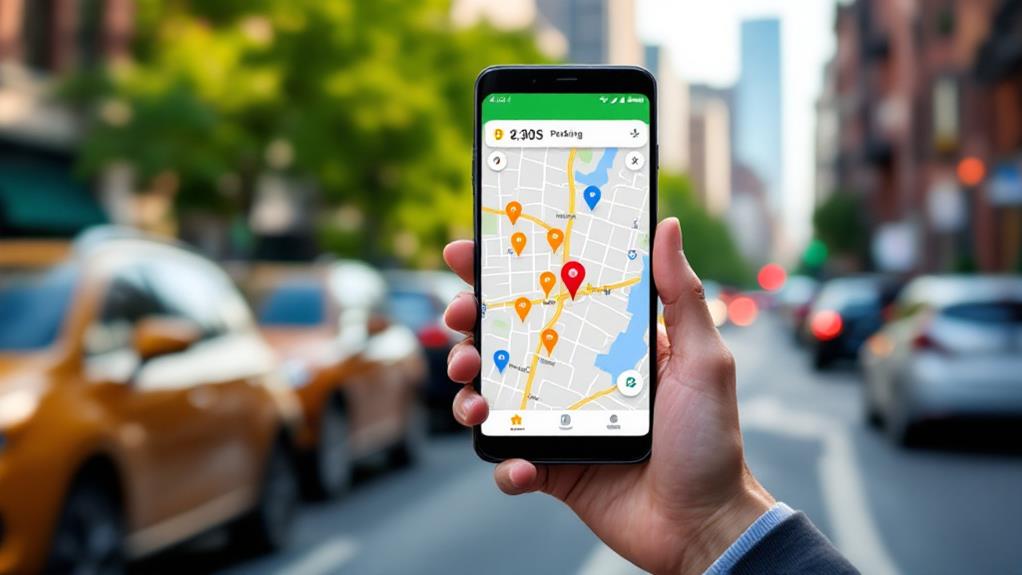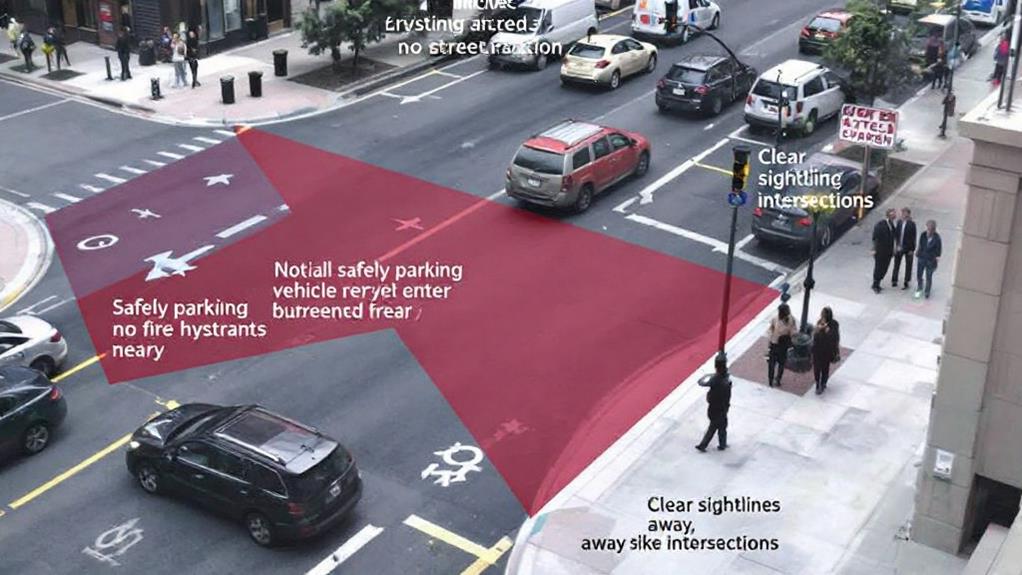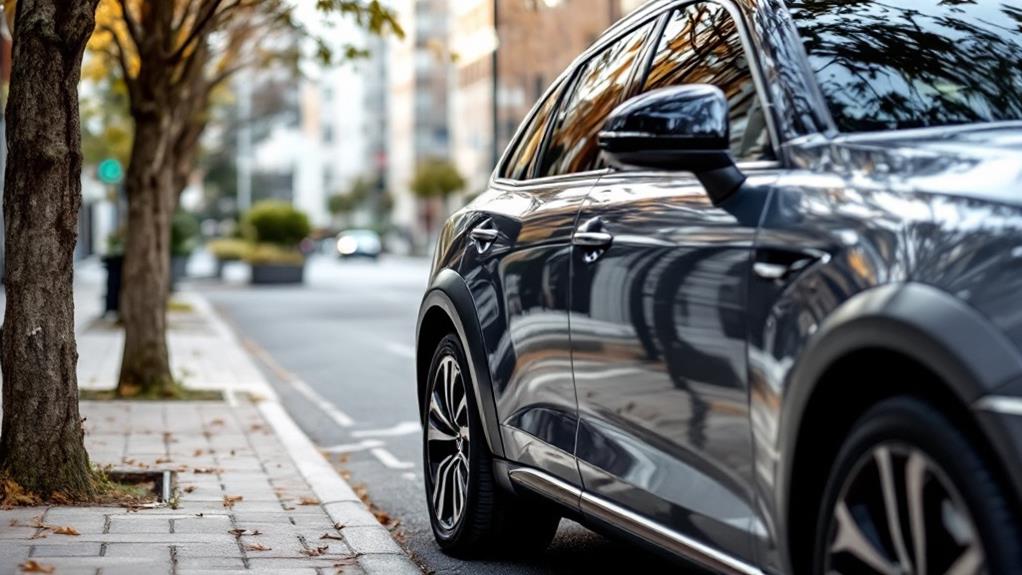How to Avoid Dings and Scratches When Street Parking

To avoid dings and scratches when street parking, choose your spot wisely. Opt for corner spaces or areas with vacant spots on both sides. Become an expert in parallel parking techniques to navigate tight spaces confidently. Protect against environmental hazards by avoiding trees and flood-prone areas. Employ protective accessories like bumper guards and door edge protectors. Be mindful of neighboring vehicles, steering clear of poorly maintained cars or those with large doors. Practice defensive parking strategies by leaving ample space between vehicles. Capitalize on technology like backup cameras and parking sensors for added safety. Regular maintenance and inspections will help you stay ahead of potential issues. These strategies are just the beginning of safeguarding your vehicle.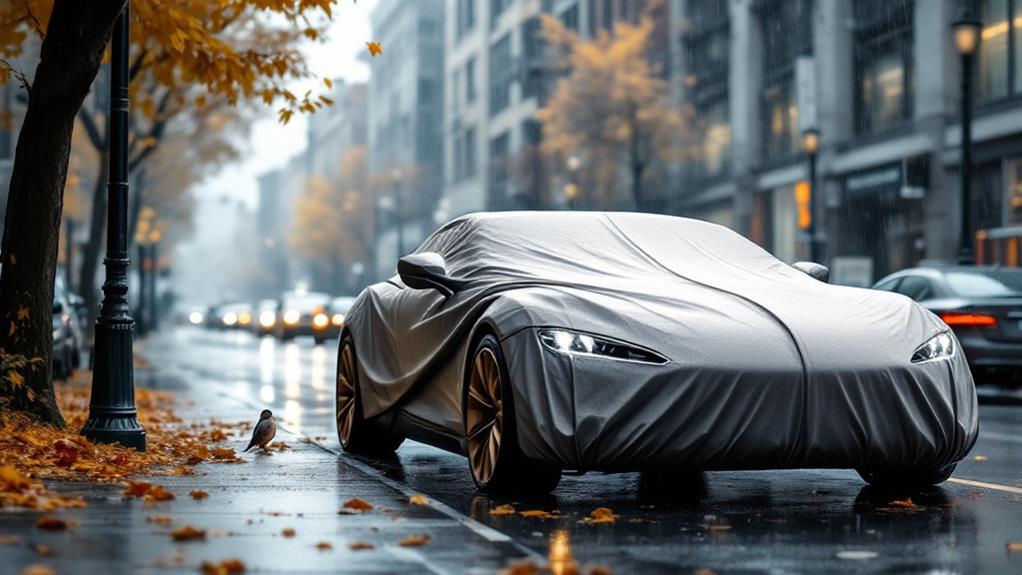 Your car's protection against environmental hazards is crucial when street parking. To safeguard your vehicle's paint job and clear coat, choose your parking spot wisely. Opt for well-lit areas to deter vandalism and theft, reducing the risk of damage from another driver or a rogue shopping cart. Avoid parking under trees, as bird droppings and tree sap can harm your car's exterior. Be mindful of potential flooding risks by parking on higher ground when possible. This precaution can save you from costly repairs and disputes with your insurance company. During severe weather, use snow covers or blankets to shield your windows from hail damage. These simple measures can protect your car from nature's unpredictable elements. To combat rust and corrosion, apply a lubricating metal conditioner to your vehicle's exterior. This step is especially important in areas with high humidity or near saltwater. By taking these proactive measures, you'll maintain your car's appearance and value while minimizing the likelihood of environmental damage when street parking. Remember, a little prevention goes a long way in preserving your vehicle's condition and avoiding unnecessary trips to the body shop.
Your car's protection against environmental hazards is crucial when street parking. To safeguard your vehicle's paint job and clear coat, choose your parking spot wisely. Opt for well-lit areas to deter vandalism and theft, reducing the risk of damage from another driver or a rogue shopping cart. Avoid parking under trees, as bird droppings and tree sap can harm your car's exterior. Be mindful of potential flooding risks by parking on higher ground when possible. This precaution can save you from costly repairs and disputes with your insurance company. During severe weather, use snow covers or blankets to shield your windows from hail damage. These simple measures can protect your car from nature's unpredictable elements. To combat rust and corrosion, apply a lubricating metal conditioner to your vehicle's exterior. This step is especially important in areas with high humidity or near saltwater. By taking these proactive measures, you'll maintain your car's appearance and value while minimizing the likelihood of environmental damage when street parking. Remember, a little prevention goes a long way in preserving your vehicle's condition and avoiding unnecessary trips to the body shop.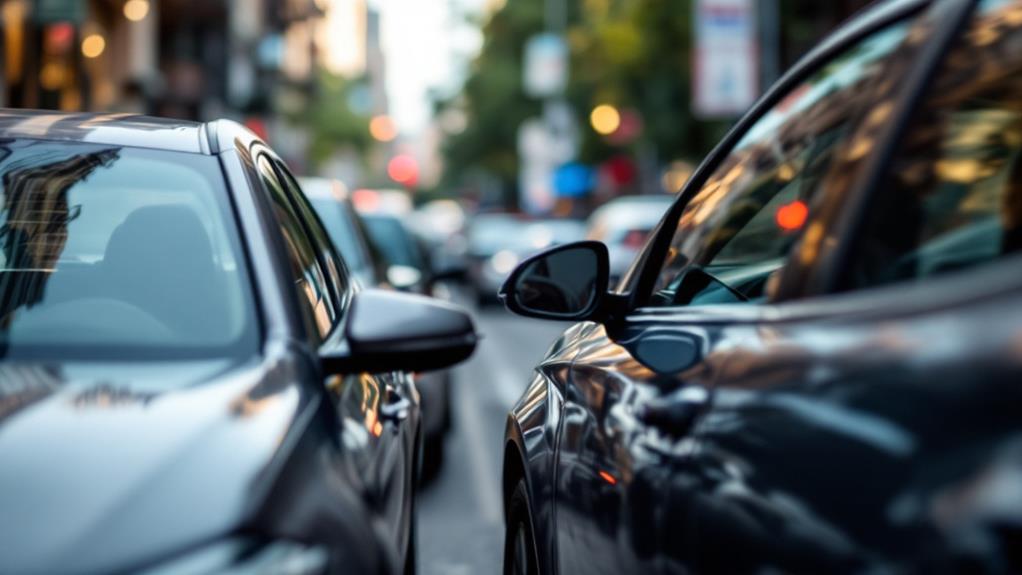 When selecting a parking spot, carefully assess the vehicles around you to minimize the risk of door dings and scratches. Pay close attention to the type of cars parked next to your potential spot. Avoid parking next to vehicles with large doors, such as Ford Mustang convertibles, as they're more likely to cause damage when opened. Observe the size and configuration of car doors on adjacent vehicles. This will help you gauge the potential for door dings and choose a spot that offers the best protection. Be wary of tourist or rental vehicles, as their drivers may be less careful with their temporary rides. When taking care to park, consider the overall condition of neighboring vehicles. Steer clear of poorly maintained or already damaged cars, as their owners might be less concerned about causing additional harm. Instead, look for well-kept vehicles, as their owners are more likely to be cautious when opening their doors.
When selecting a parking spot, carefully assess the vehicles around you to minimize the risk of door dings and scratches. Pay close attention to the type of cars parked next to your potential spot. Avoid parking next to vehicles with large doors, such as Ford Mustang convertibles, as they're more likely to cause damage when opened. Observe the size and configuration of car doors on adjacent vehicles. This will help you gauge the potential for door dings and choose a spot that offers the best protection. Be wary of tourist or rental vehicles, as their drivers may be less careful with their temporary rides. When taking care to park, consider the overall condition of neighboring vehicles. Steer clear of poorly maintained or already damaged cars, as their owners might be less concerned about causing additional harm. Instead, look for well-kept vehicles, as their owners are more likely to be cautious when opening their doors. In light of recent technological advancements, you can now utilize various safety features to protect your vehicle while street parking. Backup cameras and sensors have become essential tools for detecting obstacles and preventing collisions when reversing or squeezing into tight spots. These technologies markedly reduce the risk of damaging your car or nearby vehicles. Many modern cars are equipped with 360-degree camera systems, offering a bird's-eye view of your surroundings. This enhanced visibility allows you to navigate even the tightest parking spaces with confidence. Parking assist technologies take this a step further by automating the parking process, precisely guiding your vehicle into challenging spots. Ultrasonic proximity sensors are another precious asset, alerting you when objects are too close. These warnings enable you to adjust your parking maneuvers and avoid potential scrapes or dings. For exhaustive protection, consider vehicles with Advanced Driver Assistance Systems (ADAS). These sophisticated systems can detect other vehicles, pedestrians, and objects, providing both audible and visual warnings to keep you informed of potential hazards. By leveraging these technologies, you'll significantly reduce the risk of damaging your car while street parking.
In light of recent technological advancements, you can now utilize various safety features to protect your vehicle while street parking. Backup cameras and sensors have become essential tools for detecting obstacles and preventing collisions when reversing or squeezing into tight spots. These technologies markedly reduce the risk of damaging your car or nearby vehicles. Many modern cars are equipped with 360-degree camera systems, offering a bird's-eye view of your surroundings. This enhanced visibility allows you to navigate even the tightest parking spaces with confidence. Parking assist technologies take this a step further by automating the parking process, precisely guiding your vehicle into challenging spots. Ultrasonic proximity sensors are another precious asset, alerting you when objects are too close. These warnings enable you to adjust your parking maneuvers and avoid potential scrapes or dings. For exhaustive protection, consider vehicles with Advanced Driver Assistance Systems (ADAS). These sophisticated systems can detect other vehicles, pedestrians, and objects, providing both audible and visual warnings to keep you informed of potential hazards. By leveraging these technologies, you'll significantly reduce the risk of damaging your car while street parking.
Choose Your Spot Wisely
The art of choosing the right parking spot can make a world of difference in protecting your vehicle. When you're looking for a place to park, opt for corner spots whenever possible. These locations offer less chance of being blocked by other vehicles and reduce the risk of bumper damage from people trying to squeeze into tight spaces. Always seek out brightly lit areas, especially if you'll be leaving your car for an extended period. Well-lit parking spots help deter vandalism and theft, keeping your vehicle safer. If you're confident in your parallel parking skills or have a car with parking assist features, don't shy away from tighter spaces that others might avoid. Take care to steer clear of parking under trees. While the shade might seem appealing, it's not worth the potential paint damage from bird droppings and tree sap. Additionally, be mindful of the terrain when choosing your parking spot. If there's a risk of flooding, park on higher ground to avoid water damage.Master Parallel Parking Techniques
Once you've selected the ideal parking spot, conquering parallel parking techniques becomes your next challenge. To handle this skill, start by adjusting your mirrors properly. This essential step allows you to accurately judge the distance between your car, the curb, and the vehicle in front. When maneuvering into parking spots, employ the hand-over-hand steering technique. This method provides better control as you navigate tight spaces. As you approach the spot, position your car at a 45-degree angle to the curb. Slowly reverse into the space, looking over your shoulder to gauge distances and align your wheels correctly. Once you've backed in, straighten your wheels and pull forward to center your car in the space. This reverse parking approach maximizes your control and minimizes the risk of dings and scratches. To improve your parallel parking skills, practice in low-traffic areas and watch online tutorials. These resources can help you develop the confidence needed for proficient parking. Remember, handling parallel parking takes time and practice, but the ability to smoothly maneuver into tight spots will serve you well in urban environments.Protect Against Environmental Hazards

Utilize Protective Accessories
Savvy car owners know that protective accessories can be a crucial factor when it comes to street parking. To avoid door dings and scratches, you'll want to make your car as resilient as possible. Start by installing bumper guards, which provide extra cushioning against impact and reduce the risk of dents. These are especially useful when you can't avoid parking next to other vehicles. Consider adding wheel well liners to protect your car's exterior from road debris and gravel. Door edge guards create a protective barrier, preventing paint chipping and scratches from adjacent cars. To shield vulnerable areas like the front end and mirrors, apply paint protection film. This will help you avoid costly dent repair and potential insurance claims. Clear bra coverings are another excellent option to safeguard your paint and prevent discoloration from UV exposure and environmental contaminants. By utilizing these protective accessories, you'll not only keep your car looking pristine but also maintain its value. Remember, prevention is key – investing in these protective measures can save you time, money, and the hassle of filing a police report for damages incurred while street parking.Be Mindful of Neighboring Vehicles

Practice Defensive Parking Strategies
Five key defensive parking strategies can substantially reduce the risk of dings and scratches when street parking. When you're looking for a spot, try to park in corner spaces or areas with vacant spots on both sides. This reduces the chances of door dings from neighboring vehicles. If you can't find an end spot, make sure to park away from high-traffic areas where shopping carts and careless pedestrians might cause damage. Always park in well-lit areas to deter vandalism and theft, which can lead to unwanted scratches and dents. Don't park right next to other vehicles if you can avoid it. Instead, look for spots with ample space on either side. Improve your parallel parking skills or use backup cameras to maneuver tight spaces confidently. Avoid parking under trees to protect your paint from bird droppings and tree sap. Ultimately, be mindful of potential flood risks and try to park on higher ground when possible. By implementing these defensive strategies, you'll drastically reduce the likelihood of dings and scratches while street parking.Leverage Technology for Safety

